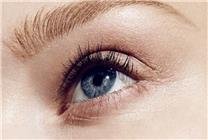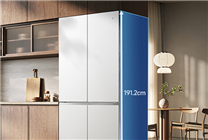Summary
- A healthy reading environment is essential for children’s eye protection, incorporating proper lighting, ergonomic design, and spatial layout.
- Choosing eye protection lamps that meet national standards is crucial in reducing visual strain and ensuring a conducive learning atmosphere.
- Innovative lamp technologies, such as adaptive dimming and red light eye-pleasing features, can significantly enhance reading comfort and reduce myopia risks.
As children grow, creating an optimal reading environment is crucial for their vision health. This includes fostering a space that combines appropriate lighting conditions, ergonomic furniture arrangements, and minimal distractions. Here, we explore key considerations for designing an ideal reading space for children.
Importance of Proper Lighting
A well-lit environment plays a vital role in reducing visual fatigue. The best lighting setup combines "basic lighting" and "key lighting"—where ambient light fills the room, while focused desk lamps illuminate the reading area. This dual approach helps mitigate issues arising from stark light contrasts.
According to national standards, desk illumination should be set at a minimum of 500 lux in central areas and 250 lux in surrounding zones. Consistency in lighting is also essential, with uniformity controlled within a 3:1 ratio, avoiding noticeable bright or dark spots.
Spatial Layout
When arranging furniture, desks should not face windows to minimize glare from direct sunlight. Additionally, maintaining good ventilation in the room while managing humidity levels between 40% and 60% can enhance comfort and eye health.
Ergonomic Considerations
Choosing the right height for desks and chairs is critical. Children should maintain a 30-40 cm distance from their books, and desktops should be kept free of unnecessary items to minimize distractions. This design aids in reducing neck fatigue and improves focus during reading.
Selecting Eye Protection Lamps
In the pursuit of quality eye protection, parents must prioritize lamps that meet national performance standards. As established in the guidelines, lighting should focus on several core performance indicators:
- Illuminance Levels: Lamps rated at AA-level provide superior lighting for long reading sessions compared to A-level lights.
- Color Temperature: For nighttime reading, desk lamps should not exceed 4000K to prevent interference with melatonin production, which can affect sleep quality.
- Color Rendering Index (CRI): High-quality lamps should have a CRI above 90, ensuring that colors appear natural and reducing visual fatigue.
Blue Light and Flicker Protection
Selecting lamps that provide "no hazard" blue light protection is essential. Effective lamps utilize technologies to filter out harmful blue light, ensuring safe levels within the 415-455 nm spectrum. Furthermore, lamps should pass strobe tests and ideally employ DC dimming technology to eliminate flickering that can strain the eyes.
Emerging Technologies in Lighting
Modern eye protection lamps are increasingly incorporating advanced technologies, such as intelligent dimming and spectral optimization. For example, full-spectrum technology simulates natural light and compensates for missing wavelengths, which can lead to a more comfortable reading experience.
Adaptive dimming systems adjust light output based on ambient brightness, thereby maintaining stable illumination levels throughout changes in external light conditions. Features like seating sensors that automatically turn on lamps when a child sits down enhance usability while preventing reading in dim conditions.
Age-Specific Lighting Recommendations
For preschool-age children, a partition lighting strategy can create a distinction between different activities. Brightness levels of 500 lumens for play areas and 800 lumens for reading can help foster concentration. Additionally, lamps capable of slowly adjusting brightness every 30 minutes can mimic natural light changes, promoting adaptive reading habits.
For children in primary school, stable desktop illumination above 500 lux is essential. A combination approach—utilizing both ceiling lights and desk lamps—can create a three-dimensional lighting environment. Color temperatures can be adjusted throughout the day, transitioning from cooler morning lights to warmer evening tones to facilitate healthy sleep patterns.
Senior students especially require high CRI lighting—95 or above—to accurately reproduce the colors of textbook illustrations and handwritten notes. Such precision can significantly reduce color recognition fatigue, enhancing their learning experience.
Conclusion
Creating an ideal reading environment for children revolves around understanding their visual needs and thoughtfully selecting lighting solutions. Parents should prioritize core indicators such as proper illuminance, safe blue light levels, and flicker-free lighting over unnecessary multifunctional features.
Ultimately, the best lighting is one that fades into the background—allowing children to focus entirely on their reading material. By fostering good reading habits alongside smart lighting choices, parents can effectively aid in protecting their children’s eyesight.








